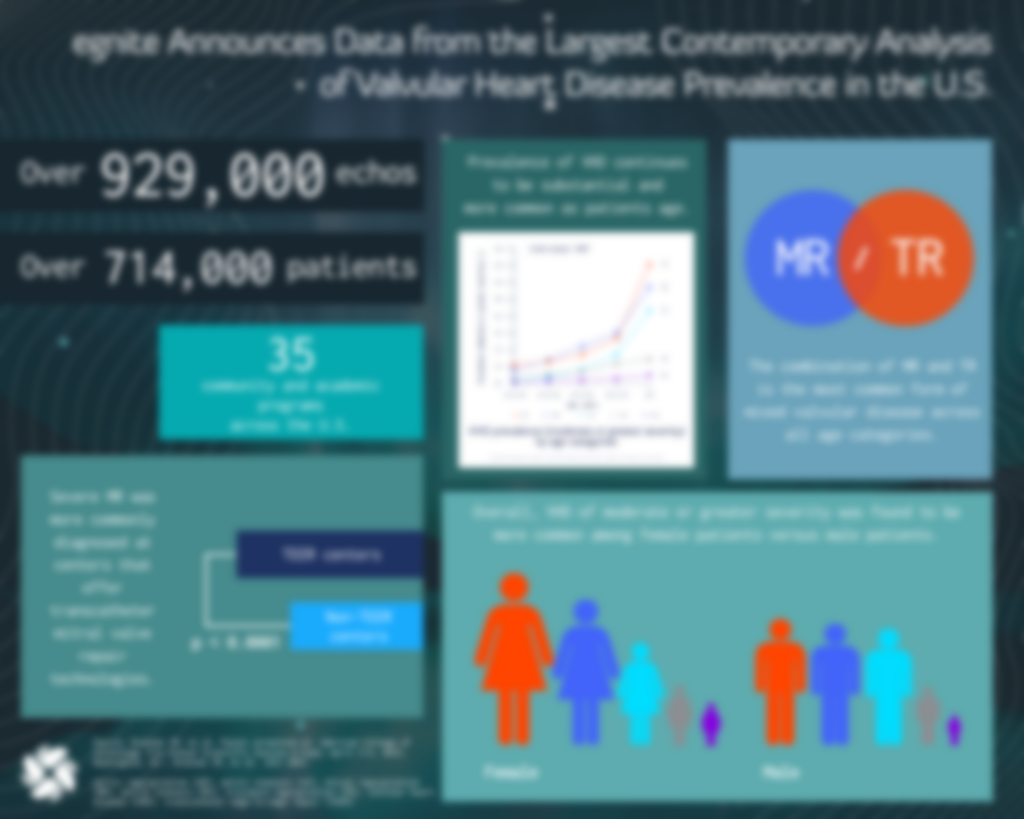“This is the first prevalence study out of one of the largest echo databases in the world, underscoring the potential for groundbreaking research from this tremendous resource. Our work expands by an order of magnitude the sample size and generalizability of previous work in a large contemporary cohort.”

J. Matthew Brennan, M.D., M.P.H., Associate Professor of Medicine, Interventional Cardiology, Duke University School of Medicine, and lead author of the study.
New data1,2 demonstrates valvular heart disease (VHD) is more common in women in the U.S. Other key findings suggest tricuspid and mitral regurgitation have the highest prevalence rates, with severe mitral regurgitation being more frequently diagnosed in centers offering transcatheter mitral repair technologies.
This study is the largest contemporary analysis of the prevalence of VHD, with previous landmark analyses including the the Framingham Heart Study3 and Nkomo et al4. The study, sponsored by egnite, evaluates the prevalence of aortic stenosis (AS), aortic regurgitation (AR), mitral stenosis (MS), mitral regurgitation (MR), and tricuspid regurgitation (TR) in the U.S. and has been published as an abstract in the Journal of the American College of Cardiology (JACC)1 and presented at the American College of Cardiology 71st Annual Scientific Session (ACC.22)2.
The analysis, which was performed on data from over 714,000 patients (represented by over 929,000 echocardiograms), found the prevalence of VHD by type (%) to be as follows: TR (7.1%), MR (6.5%), AS (4.1%), AR (2.3%), and MS (0.5%).
References
- Brennan JM, Petrescu M, McCarthy P, et al. Contemporary prevalence of valvular heart disease & diagnostic variability across centers. J Am Coll Cardiol. 2022;79(9_Suppl):1723.
- Brennan JM, Petrescu M, McCarthy P, et al. Contemporary prevalence of valvular heart disease & diagnostic variability across centers. Poster presented at: American College of Cardiology 71st Annual Scientific Session & Expo; April 2–4, 2022; Washington, DC.
- Singh JP, Evans JC, Levy D, et al. Prevalence and clinical determinants of mitral, tricuspid, and aortic regurgitation (the Framingham Heart Study). Am J Cardiol. 1999;83(6):897-902.
- Nkomo VT, Gardin JM, Skelton TN, et al. Burden of valvular heart diseases: a population-based study. Lancet. 2006;368(9540):1005-11.




